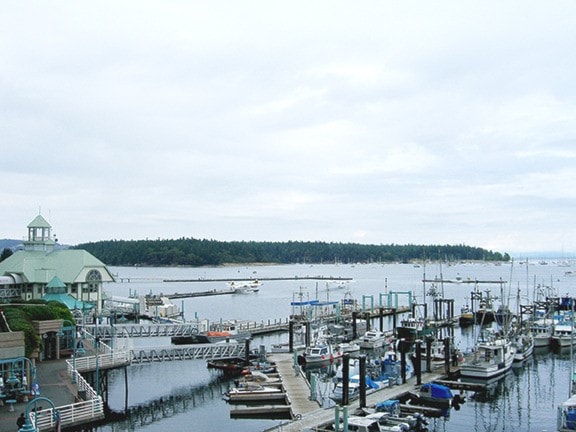It was all over in an instant, with a single flash of flame like that of a lightning bolt.
We know that more than 600 miners were killed on the job in Nanaimo area coal mines over that industry’s 80-year history. If we take into account those who died later from their injuries or from work-related illnesses, the death toll must be much greater.
Nor is it likely that either of these totals include the six longshoremen who were killed in a blast of ignited coal dust while loading the steamship Queen of the Pacific at Cameron Island, July 29, 1886.
I’ve had this story on file for years but Ken Hiebert of Ladysmith kindly reminded me of it upon the occasion of a rededication of their memorial in Nanaimo, in September 2014. I wasn’t able to attend the ceremony but I can, belatedly, honour them in print...
According to the headlines in the Nanaimo Free Press, 12 men had been severely burned and several others “slightly scorched” while loading the Pacific. The tragedy began with the cry of Fire! followed almost instantaneously by an explosion between decks and “the outburst of an immense sheet of flame through the forward hatch”.
Of the 20 men who were working below decks, trimming the coal, 12 received severe burns about the head, back, chest and arms. Some of them, panicking or in agony, jumped overboard and, upon being picked up by the ship’s crew, were rushed to the infirmary of Dr. D. Cluness, medical officer for the Marine Department. There, he and Drs. Renwick and Davis partially dressed their injuries while Dr. O’Brien attended to those still on board the ship. All the while, teams of horses and wagons were being rounded up to serve as ambulances to take the injured men to the city hospital.
The newspaper described it as “a pitiable sight to see the poor fellows with the burnt flesh hanging to their arms, hands and faces”.
Immediately suspected as the cause of the blast was highly volatile coal dust. The fact that the coal was being loaded by chutes, meaning the unavoidable production of dust despite the use of canvas curtains, in the illumination of open-flame lanterns, had created the catalyst for disaster.
Upon the dumping of a coal car (five tons) down the chute, the explosion was described by a survivor as a dull, heavy thud “as like an earthquake”. Amazingly, the resulting flame flared upward and outward through the forward hatch without causing injury to the ship. It was all over in an instant, with a single flash of flame like that of a lightning bolt. This was not the way of a gas explosion which, it was thought, would have caused greater damage.
“Another theory advanced,” reported the Press, “was that a giant cartridge had been accidentally left [by miners] among the coal and had been fired by the concussion of the [coal falling down the chute], but that is so highly improbable that it is hardly worthy of serious consideration. The fire was a sudden outburst of flame, and in a moment had expended itself. We have made careful inquiries into all the circumstances and surroundings of this unfortunate and mysterious accident, and we draw the following conclusion:
“At the time of the explosion the weather was extremely sultry and oppressive, and that the limited ventilation in the hold and between decks, was almost stagnant, and the air became impregnated with the fine particles of coal dust.
“The quick rush of about five tons of coal down the chutes and into the stagnant atmosphere of the between decks, caused a sudden draught and the impregnated atmosphere was thrown into active commotion and while in this state the dust ignited from one of the several lamps hanging about the between decks. It is now a well-established fact that not only will the coal dust in mines, but the dust in flour mills, explode. The preventative for such explosions is good ventilation, and we feel confident that the explosion of Thursday was caused solely by the oppressive atmosphere causing the limited ventilation to stagnate, and the use of ordinary ship lamps...”
Already, despite four doctors and nine nurses working round the clock, some of the worst injured had succumbed to shock. First to die, the next afternoon, was longshoreman William ‘Frenchy’ Robee; although a resident of Seattle, he was interred in the Nanaimo cemetery. He was followed hours later, in death and in interment, by fellow Seattle stevedores James [William] Kade, aged 30, and Hans Hanson, 21. Four days after the explosion, August Johnson, a 28-year-old seaman on the Pacific, joined the death toll. This left six longshoremen and seamen in hospital with life-threatening injuries.
Because government-appointed medical officer Dr. Cluness doubled as coroner, between attending to victims’ medical needs, he chaired the first inquest, that of William Robee. Three further inquests, those for James (since corrected to William) Kade, Hans Hanson and August Johnson followed. In every case, Dr. Benwick cited nervous shock because of extensive skin burns as the killer, none of the victims having demonstrated internal injuries through inhalation.
By the ninth day, those still being treated were said to be having “a severe time of it,” some of them in such extreme pain that they had to be forcibly held down in their beds. Perhaps mercifully, next to go were Patrick Priestly, George Watch and Henry Jackson, all said to have succumbed to nervous shock. Sadly for Jackson, his “good heart and strong constitution” appears to have prolonged his agony.
(To be continued)
www.twpaterson.com
